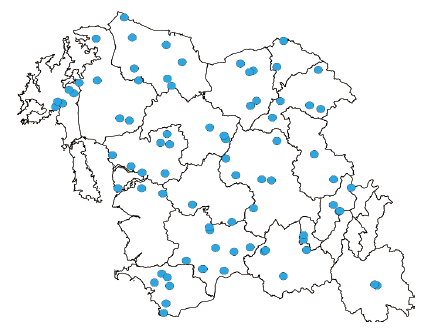Abstract
Figures & Tables

Fig. 1. Distribution map of in Chungnam province of Korea. The color dots in the map refers the place where exists.
Thi Hien Le1 Seung Chul Shin1 Jae Eun Song2 Aung Bo Bo1 Weiqiang Jia1 Kwang Min Cho3,* Kee Woong Park1,*
1Department of Crop Science, College of Agriculture and Life Sciences, Chungnam National University,
Daejeon 34134, Korea
2Agriculture Research Center, HankookSamGong, Co., Ltd., Gimje 54328, Korea
3Daeseung Bio Farm Research Center, Daejeon 34127, Korea

Fig. 1. Distribution map of in Chungnam province of Korea. The color dots in the map refers the place where exists.